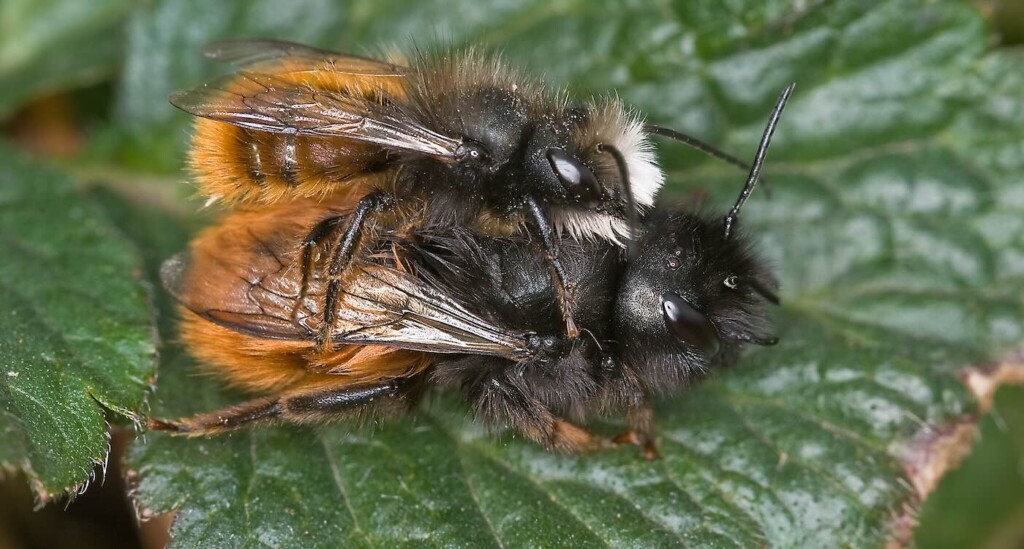 Pair of European orchard bees (Osmia cornuta) GNU Free license
Pair of European orchard bees (Osmia cornuta) GNU Free licenseIf you happen to be on a ramble in southern Britain next year, you may see a solitary orangish bee flitting between rising flowers as early as late February.
Such days used to be too cold for Osmia cornuta, known as the European orchard bee, a regular pollinator in orchards on the mainland. However, rising global temperatures have allowed this powerhouse pollinator to find the English meadows fit for purpose.
O. cornuta will emerge in early to mid-March and begin feeding on the nectar of the earliest flowering plants like scilla, a genus of bulb-forming perennial flowers, often called squills and known for their early spring blooming of star-shaped blue, purple, white, or pink blossoms.
Though not a honeybee, it is utilized as a commercial pollinator, and deployed in almond, cherry, and apple orchards. A solitary species, the orchard bee lays a single egg in a nest dug into rotting wood. Inside, it will stash pollen for the baby bee to eat, and then seal up the hole to protect it.
If wood isn’t available, it will happily use masonry or house walls, cracked window frames, drainage pipes, and other nooks and crannies in anthropogenic locales.
MORE GOOD POLLINATOR STORIES: A Country of 2 Million is the World Leader in Beekeeping and Protecting Pollinators
Though some might interpret its arrival in Great Britain as a negative because of the warming climate, a warming climate is also blamed for reducing pollinator species, so presumably the arrival of native European pollinator will help keep England’s meadows and verges the flowerful sights they are boasted to be.
SHARE The Buzz Among Britons That There’s A New Bee On The Block…
Source link

